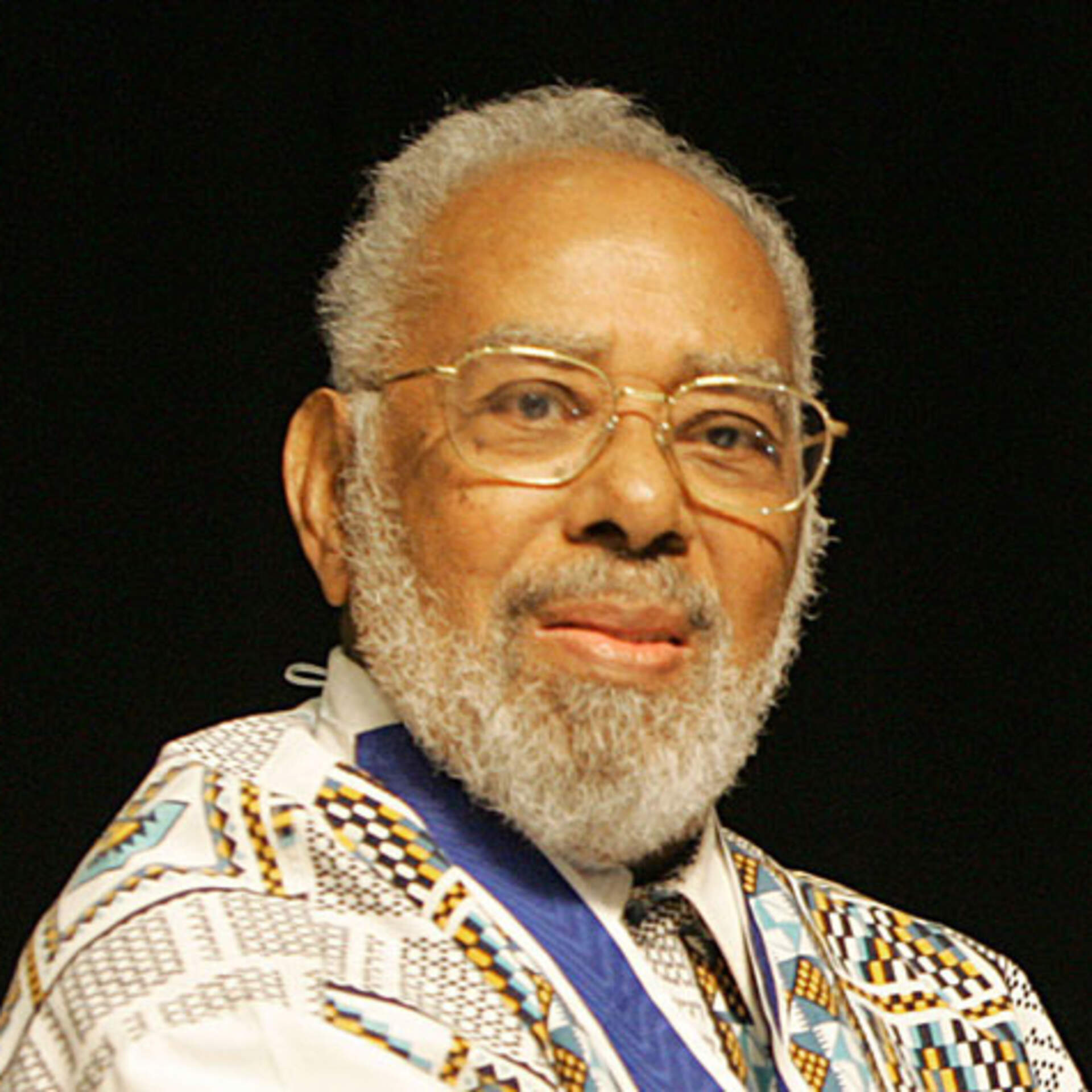Abdias do Nascimento
(1914-2011)
Abdias do Nascimento was a Brazilian painter, politician, scholar and civil rights leader. He advocated for the rights of Black Brazilians and was incredibly vocal about racial discrimination in Brazil through both his art and his political activism. Nascimento was born in March 1914 in Franca, San Paulo, Brazil. Brazil had been a major importer of enslaved African people during the slave trade and did not abolish slavery until 1888.[1] As the grandson of slaves, Nascimento observed the racial hierarchy established in the country from an early age. He joined the civil rights movement, the Brazilian Black Front, when he was a teenager.[2]
In 1944 he founded the Black Experimental Theater in Rio De Janeiro to celebrate African influences in Brazilian culture.[3] The theater trained Black actors as a form of resistance to the use of white actors in blackface and sponsored various civil rights events.[4] The next year, Nascimento helped found and organize the Afro-Brazilian Democratic Committee, which fought for the release of political prisoners.[5] He also established the Museum of Black Arts, which collected the work of Black artists who were underrepresented in museums and art galleries.[6] In 1968, Nascimento went into self-imposed exile following a military coup d’état. During his exile, he lived in the United States and Nigeria and remained active in Pan-African affairs.
It was around this time that Nascimento began to paint, producing his first major body of work in 1968.[7] His works encompassed various Afro-Brazilian religious and cultural themes, using varied shapes and forms to express ideas of freedom, expression and transcendence.[8] His works were exhibited throughout the United States, featured in galleries including the Harlem Art Gallery in New York City, the Crypt Gallery of Columbia University in New York City and The Gallery of African Art in Washington, DC.[9]
He also worked as a professor, serving as a visiting lecturer at Yale University and visiting fellow at the Wesleyan Center for the Humanities.[10] Nascimento also served as Professor Emeritus at the University at Buffalo, where he founded the chair of African Cultures in the Puerto Rican Studies program.[11]
He helped found the Democratic Labor Party of Brazil while still in exile, and upon his return in the 1980s, was elected to serve as a congressman and senator under the party in the 1980s and 1990s.[12]
Nascimento remained politically active and outspoken until the end of his life. He died on May 23, 2011 in Rio de Janeiro at the age of 97.
[1] Bruce Weber, “Abdias do Nascimento, Rights Voice, Dies at 97,” The New York Times, May 30, 2011.
[2] Bruce Weber, “Abdias do Nascimento, Rights Voice, Dies at 97,” The New York Times, May 30, 2011.
[3] Bruce Weber, “Abdias do Nascimento, Rights Voice, Dies at 97,” The New York Times, May 30, 2011.
[4] Bruce Weber, “Abdias do Nascimento, Rights Voice, Dies at 97,” The New York Times, May 30, 2011.
[5] Bruce Weber, “Abdias do Nascimento, Rights Voice, Dies at 97,” The New York Times, May 30, 2011.
[6] Oliver Basciano, “Abdias Nascimento: Spiritual Liberation and Social Freedom,” ArtReview, September 14, 2022.
[7] Oliver Basciano, “Abdias Nascimento: Spiritual Liberation and Social Freedom,” ArtReview, September 14, 2022.
[8] “Paintings by Brazilian Artist Abdias do Nascimento,” Burchfield Penney Archives, Exhibition Catalog from Studio Museum in Harlem, 1973.
[9] “Paintings by Brazilian Artist Abdias do Nascimento,” Burchfield Penney Archives, Exhibition Catalog from Studio Museum in Harlem, 1973.
[10] “Paintings by Brazilian Artist Abdias do Nascimento,” Burchfield Penney Archives, Exhibition Catalog from Studio Museum in Harlem, 1973.
[11] Bruce Weber, “Abdias do Nascimento, Rights Voice, Dies at 97,” The New York Times, May 30, 2011.
[12] Bruce Weber, “Abdias do Nascimento, Rights Voice, Dies at 97,” The New York Times, May 30, 2011.
